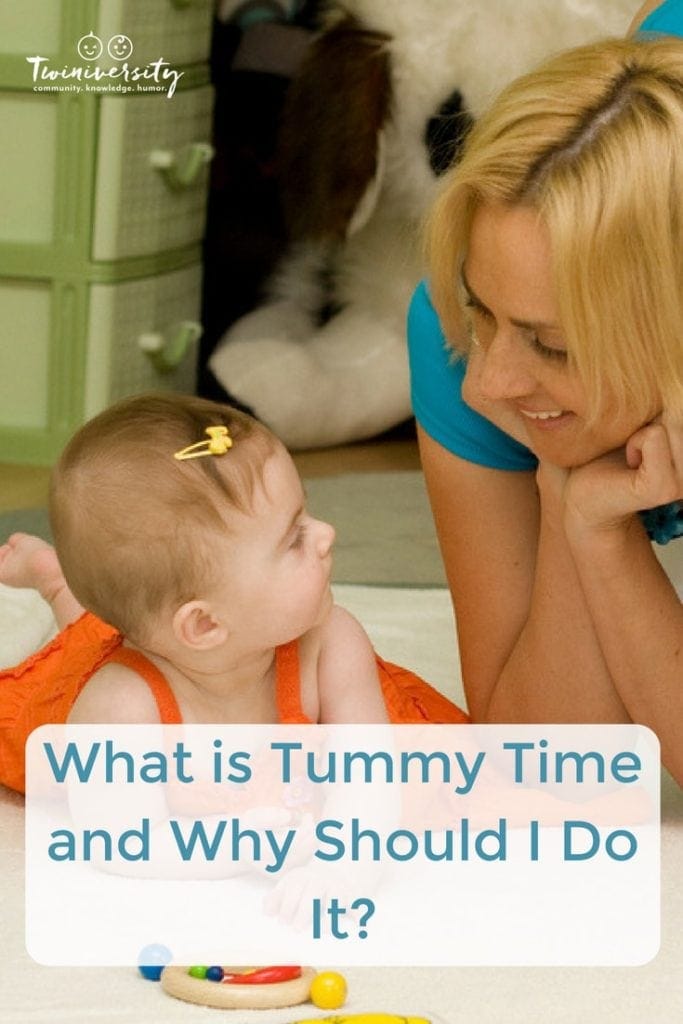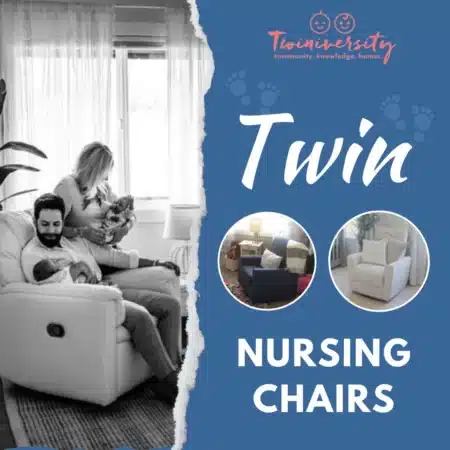Last updated on March 7th, 2024 at 11:43 am
Welcome home to you and your babies! Your precious, squirmy little bundles will be staying awake and alert enough in no time to begin tummy time. Tummy time is placing a baby on his or her stomach only while awake and supervised. It can help your baby develop strong neck and shoulder muscles and promote motor skills. Hopefully, the hospital staff educated you on safe sleep and encouraged you to place your baby on his or her tummy several times a day during wake times. If you are a new parent, you may imagine that this will be no big deal. A piece of cake. Just roll the little guy over on a fun and stimulating blanket. Unfortunately for many, your baby may not be too keen on spending time on his or her belly. To emotionally combat their pitiful little cries while getting used to the dreaded tummy time, here is a little history and the reasons why we, as parents, should have our little ones sleep on their backs and spend wake time on their tummies.
Tummy time has become an obligation for parents since the American Academy of Pediatrics (AAP) began their “Back-to-Sleep” campaign in 1994, which encouraged parents to place babies only on their backs to sleep. The reason is this: encouraging parents to sleep babies on their backs decreased infant fatalities related to Sudden Infant Death Syndrome (SIDS) from 4,700 deaths in 1993 to 2,063 deaths in 2010. Because of the decrease in SIDS deaths has been so significant, babies are spending much more time on their backs rather than on their stomachs. Routine tummy time is an important activity to combat the symptoms that result from sleeping on their backs.
Some benefits of tummy time include:
- strengthening the neck muscles
- developing motor skills
- preventing babies from developing flat spots on their head
If you’re looking to start a tummy time routine with your twins, here are some tips to get you started:

- Begin tummy time as soon as possible. You can start this practice with your doctor’s blessing, most likely on the first day home from the hospital.
- Start tummy time after a diaper change, bath, or nap to help your child anticipate and get used to the activity. Avoid doing tummy time immediately after a feeding or you will risk spit up. Give them at least 20 minutes to digest before laying them down.
- Place your baby on the mat on their tummy. Using a rolled up receiving blanket or towel under their chest with their hands on the floor may help.
- Aim for 10-20 seconds at a time at first. Increase the time as your child tolerates it.
- As your baby grows and gets better at it, help them stay engaged and entertained during this time. This should be fun for them. Eye contact, smiles, high-contrast board books, and toys (such as the Manhattan Toy Whoozit) are some ideas.
- Use this as a chance to bond with each twin. Have them take turns so you can focus on each alone. The other baby will have a great time watching!
- You don’t always have to use the floor. You can use your lap, or on your own chest or belly while you’re laying down on a couch or bed.

Parents are encouraged to work up to an hour of tummy time a day by 3 months of age. In my own experience, a lot of fellow parents have attested that babies do not seem to like tummy time at first, but it is important to help your babies get used to the activity for the sake of their own physical development.
Flat spots on the head, or Brachycephaly, can occur when infants lay on their back for prolonged periods of time. This said, the AAP states that these flat spots do not cause developmental problems, only physical deformities. However, Baby Flat Head outlines several complications that are associated with severe brachycephaly. Complications include astigmatism and other vision problems, eating and speaking difficulties, risk of hearing loss, and scoliosis, among others. Along with Brachycephaly, torticollis (tight neck muscles) seem to be diagnosed hand in hand. As stated previously, tummy time can help strengthen neck muscles and “encourage a full range of neck rotation”*.
The bottom line is that tummy time can help the baby in many ways, and while many of the issues that result from not enough tummy time can resolve themselves (if not severe) within the first few years, a flat head will remain if not treated before the skull hardens by around the age of one.
If you are concerned that one or more of your children has a flat spot, a pediatrician or craniofacial specialist can diagnose the severity of the brachycephaly. If the flat spot is severe enough, increased tummy time is encouraged or the implementation of a baby helmet is recommended. Helmets are typically begun before 8 months of age.

Both of my boys were diagnosed with tight neck muscles and a flat head by 3 months. We immediately started physical therapy to work on the tight neck muscles and increased tummy time. Unfortunately, my boys had not made enough progress by 6 months and both had helmets by 7 months at the prescription of a craniofacial specialist. Both boys completed physical therapy by 9 months and were done with their helmets by 10 months. The boys are 14 months old today and you’d never know they had flat heads and tight neck muscles last year.
Take advantage of one-on-one tummy time several times throughout the day. It will benefit your babies’ health and strength as well as your bonding experience. If you’ve been feeling that it’s difficult to make time to enjoy your babies as individuals, here’s your chance! Make it fun and light and everyone will start to look forward to it every day. Enjoy!

*Graham, John. “Tummy Time is Important.” Clinical pediatrics, vol. 45, 2006, pp. 119-21.
All content on this Website, including medical opinion and any other health-related information, is for informational purposes only and should not be considered to be a specific diagnosis or treatment plan for any individual situation. Use of this site and the information contained herein does not create a doctor-patient relationship. Always seek the direct advice of your own doctor in connection with any questions or issues you may have regarding your own health or the health of others.







